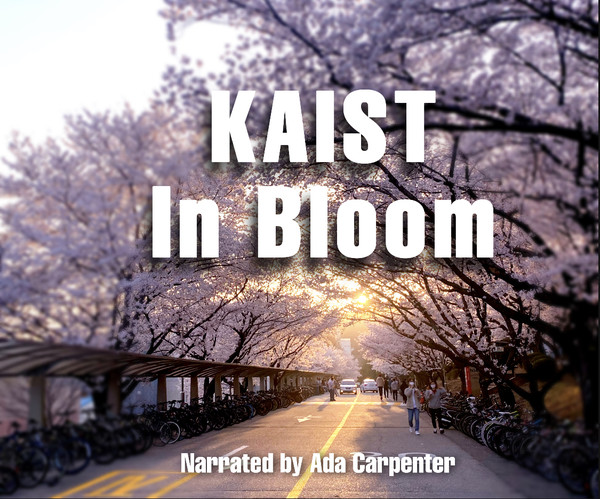
KAIST. The pastel blooms of cherry blossom trees mark the changing of seasons on the isolated campus. It is impossible not to be in awe at the splendor, power, and beauty of these landscapes, brought to life once more by the fleeting blossoms. This year, we have been able to capture the awakening in more detail than ever before. Employing new techniques and technology to reveal the secrets of lives on campus, we bring fresh insights into tales of happiness, hardship, and homework. And while the whimsical petals blanket the streets, we follow the extraordinary stories of students in the struggle to survive. This is KAIST as you have never seen it before. Welcome to KAIST in Bloom.
It’s been a long, bleak winter on the KAIST campus. With temperatures sometimes dropping below -10 degrees Celsius, the grass has long since withered to yellow, and students are in hibernation. Until now, the only hints of life have been glimpses of shuffled treks to the maejeom — a store of food shared amongst all the creatures to last out the harsh winter — from which the scent of ramyeon emanates. A chilling silence has ruled these parts for months. But as spring dawns and weak rays of sunlight return to the streets, the quiet has been broken.
Here, are the first to awaken. Eager to show off their status, newly-mated couples appear around every corner. The flush of fresh attraction tints their cheeks, and their actions. Locally known by the cryptic moniker CC, these creatures are often found capturing moments of sweetness among the blossoms, seemingly oblivious to the cars — and students — of which they are in the way. They appear to have even coordinated their outfits for the occasion, in a show that will surely enrage those yet to find a partner.
Meanwhile, the diverse groups of international students make an appearance. Normally a migratory species, their travel patterns were disrupted last year and many were forced to overwinter here. Though not in their natural habitat, most adapt well to the unfamiliar food sources and environment, and their spring behavior mirrors that of the indigenous species — a sudden burst of energy to record the blossoms as if they might never return.
Also venturing out of hibernation comes a lesser-spotted grad student. Identifiable by his noticeable pallor and deep purple under-eye circles, this grad student seems to marvel at his changed surroundings, and — like the other animals of this season — has preened and cleaned his plumage to its best condition. Perhaps his goal is to finally find a mate after a long stint of celibacy. Or perhaps, he is trying to prove his ability to function outside the windowless, sterile conditions of his regular habitat. But this excursion may cost him. Distracted from his pending tasks, the grad student risks reprimand from the leader of his laboratory pack.
But he’s in luck! The professor is also outside amongst the flowers. His scruff of questionable facial hair signifies his senior status, and for a moment it seems that he has indeed come to retrieve his underling. However, he is not alone. For the first time ever caught on camera, he is accompanied by his young. Playful and noisy, the pup attracts attention as they traverse the campus, searching for the optimal position to take a family photograph. Whether this child will grow to follow her father’s footsteps in the ruthless world of academia remains to be determined, but for now, they simply enjoy the happiness of the fresh spring.
The new life emerging across the campus this season serves as a reminder of the intricate balance of KAIST’s ecology. As new KAISTians experience the natural rite of passage that is the wondrous blooming of spring, we have seen their excitement and energy return. Though fleeting, the blossoms are a magnificent affair, reminding us to see light and hope in a campus that is often filled with stress and despair. We all play a role in the hubbub of spring, creating the true wonder of KAIST In Bloom.

